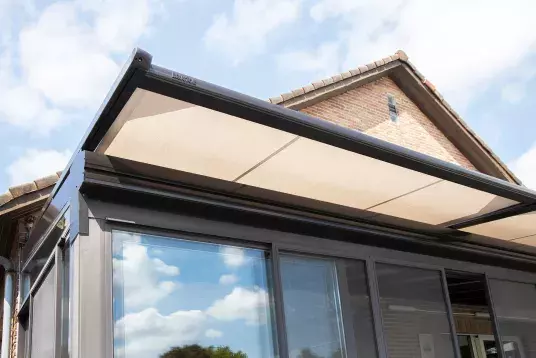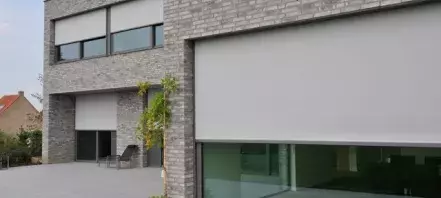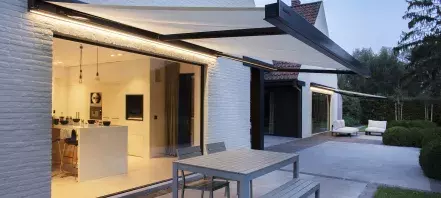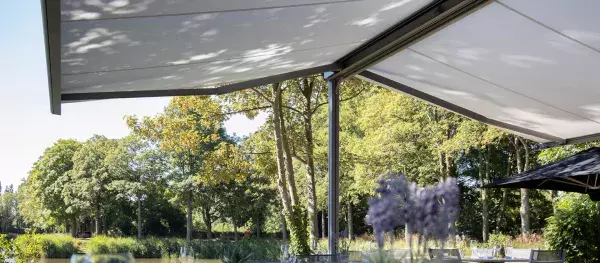
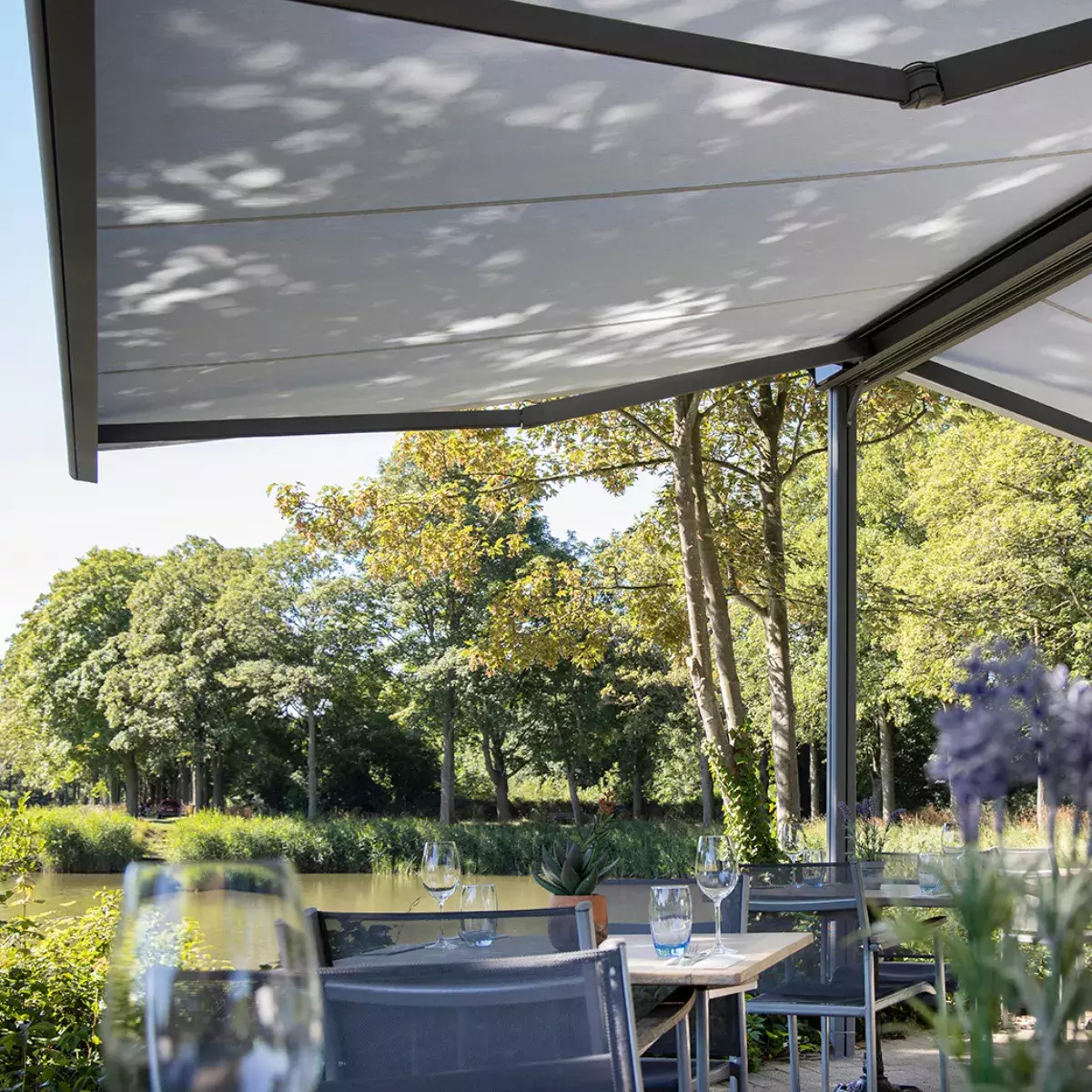
The Importance of professional guidance when choosing a fabric
Choosing the right fabric is a complex task, given the multitude of factors at play. At Brustor, a diverse array of fabrics, including fibreglass, polyester, and acrylic fabrics, are available, each boasting its unique advantages. While we are more than willing to elucidate the key considerations in selecting the ideal fabric, we strongly advocate seeking professional assistance from a Brustor dealer. With their extensive experience, these professionals can guide you through the process, ensuring you make the perfect choice for your awning needs.
Step 1 : the difference between acrylic, polyester and fibreglass
|
|
Acrylic |
Polyester |
Glass fibre |
|
Features |
|
|
|
|
Suitable for |
|
|
Step 2: Which type of shading product will you choose the fabric for?
Sun protection fabrics for ZIP screens
ZIP screens are primarily crafted with fibreglass fabrics. These fabrics excel in vertically retracting sun protection systems, maintaining tautness in various weather conditions. A noteworthy point to consider: if a screen with fibreglass fabric remains rolled up for an extended period, tension on the fabric may cause creasing. Simply unrolling the fabric completely will allow the creases to naturally disappear, ensuring a restored tight fabric tension for optimal performance.
Sun protection fabrics for articulated awnings
Articulated awnings typically utilize woven polyacrylic fabrics, commonly known as acrylic fabrics. These fabrics offer UV resistance and are water- and dirt-repellent, making them suitable for various awning types, including eco-friendly PVC-free options.
Sun protection fabrics for conservatory awnings
Conservatory awnings often feature acrylic fabrics due to their UV resistance and water- and dirt-repelling properties, similar to articulated screens. Additionally, polyester fabrics, such as those in the Soltis collection, are available for conservatory awnings. Polyester fibers boast dimensional stability and resilience against tearing and wear. This diverse selection ensures you can choose the fabric that best aligns with your preferences and the specific requirements of your shading solution.
Step 3: Personal preferences
The colour of your fabric
The color of your chosen fabric influences both the aesthetics and effectiveness of your blinds. Dark colors filter over 90% of solar radiation, while lighter colors allow more light and UV rays to penetrate. Your personal taste, surroundings, and desired functionality should guide this decision. Dark colors are well-suited for busy streets or tree-lined areas, but they may show dirt more prominently. It's essential to note that certain fabrics, particularly in the evening, may allow visibility from outside if illuminated from within.
Moreover, our fabric selection provides a plethora of design options, including drawings, patterns, and block stripes, allowing you to infuse a personal touch or match the style of your home. For businesses like cafes or shops, personalized printing or lettering on awning fabric is available—an ideal way to display your logo or business name on your awning.
Visibility vs. Blackout
When selecting a screen fabric, you have the choice between maintaining visibility to the outside or opting for total blackout. For windows in common areas like the living room, choosing a fabric that preserves visibility outside maintains a spacious feel. Conversely, for bedroom screens, a blackout fabric is advisable to ensure a restful night's sleep. If privacy is a concern, consider a fabric with a 1% privacy rating, offering complete privacy without compromising the view to the outside. This thoughtful consideration ensures that your fabric choice aligns seamlessly with both your practical needs and personal preferences.
Maintenance
Preserving the longevity and appearance of your awning fabric requires regular cleaning, recommended at least once a year, ideally in the spring or autumn. Frequent cleaning makes maintenance easier, ensuring a fresh and well-maintained fabric throughout the year. Follow these steps for optimal cleaning, keeping in mind not to clean the canvas in direct, intense sunlight to prevent staining.
Cleaning Procedure:
- Begin by removing loose debris, such as twigs and leaves, using a soft brush.
- Dampen the cloth with clean water to soften embedded dirt.
- Prepare a solution using lukewarm water (maximum 40°C) and a mild, fine detergent (concentration: 5-10%).
- Apply the foam to the cloth gently, avoiding vigorous rubbing.
- Allow the detergent to act on the fabric for 15-20 minutes.
- Thoroughly rinse the fabric with ample clean water.
- Ensure the fabric dries completely before using it again.
Crucially, never employ a pressure washer, aggressive tools, chemicals, or abrasives, as these can compromise the fabric's quality.
For more in-depth information on maintaining your canopy or awning, explore our articles on cleaning canopies and articulated arms:
These resources provide additional insights and tips to help you keep your canopy or awning in pristine condition.


